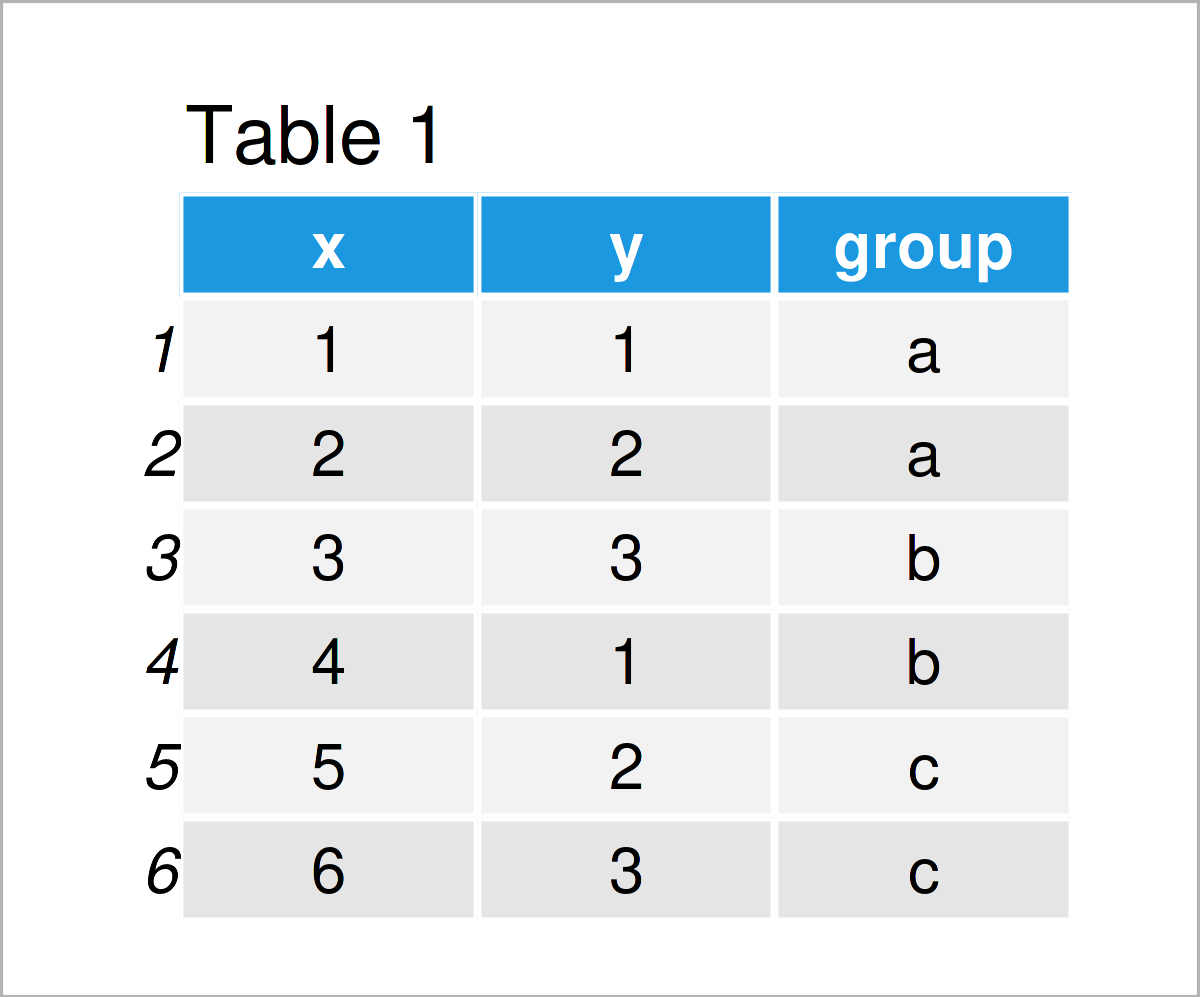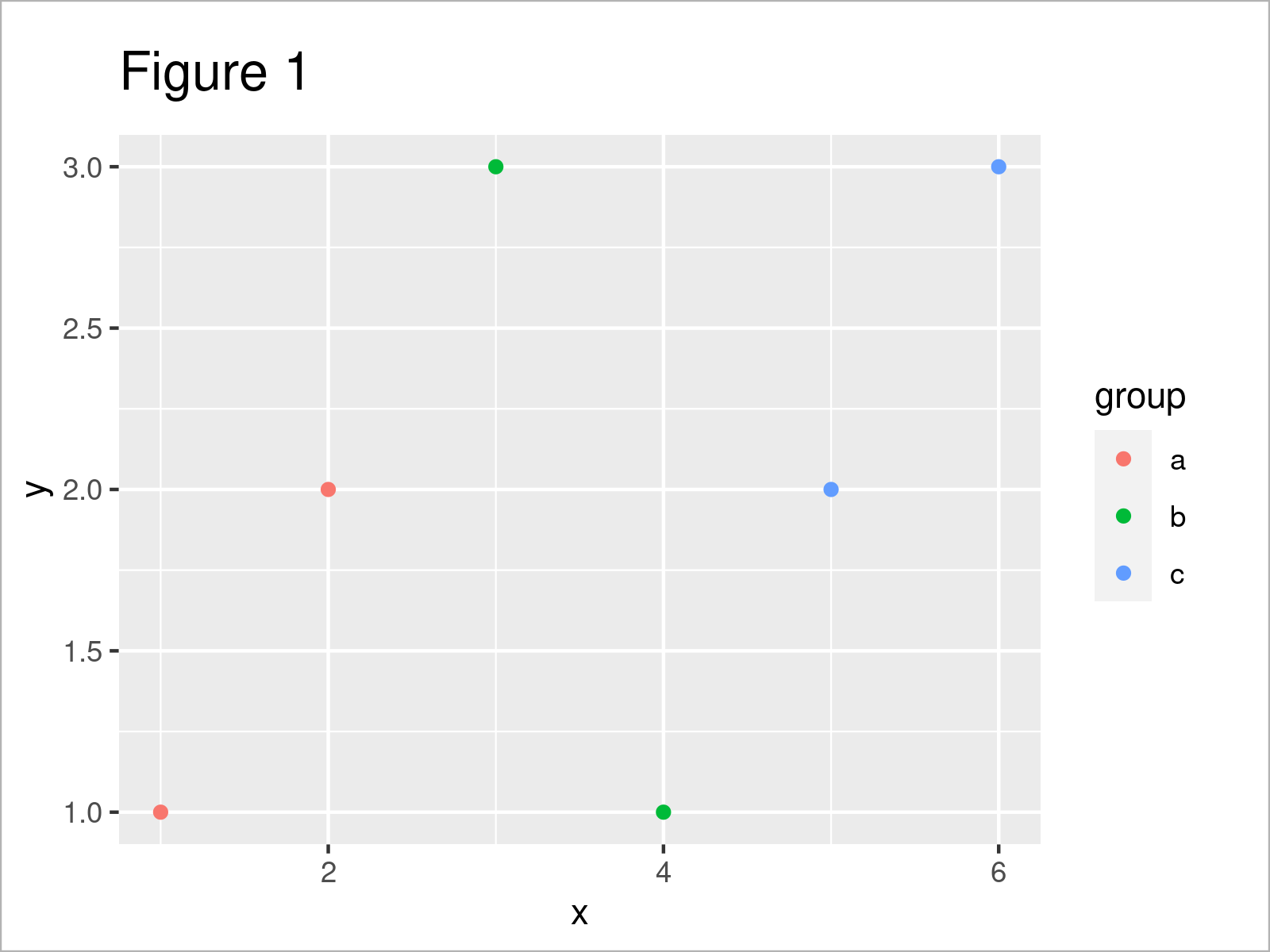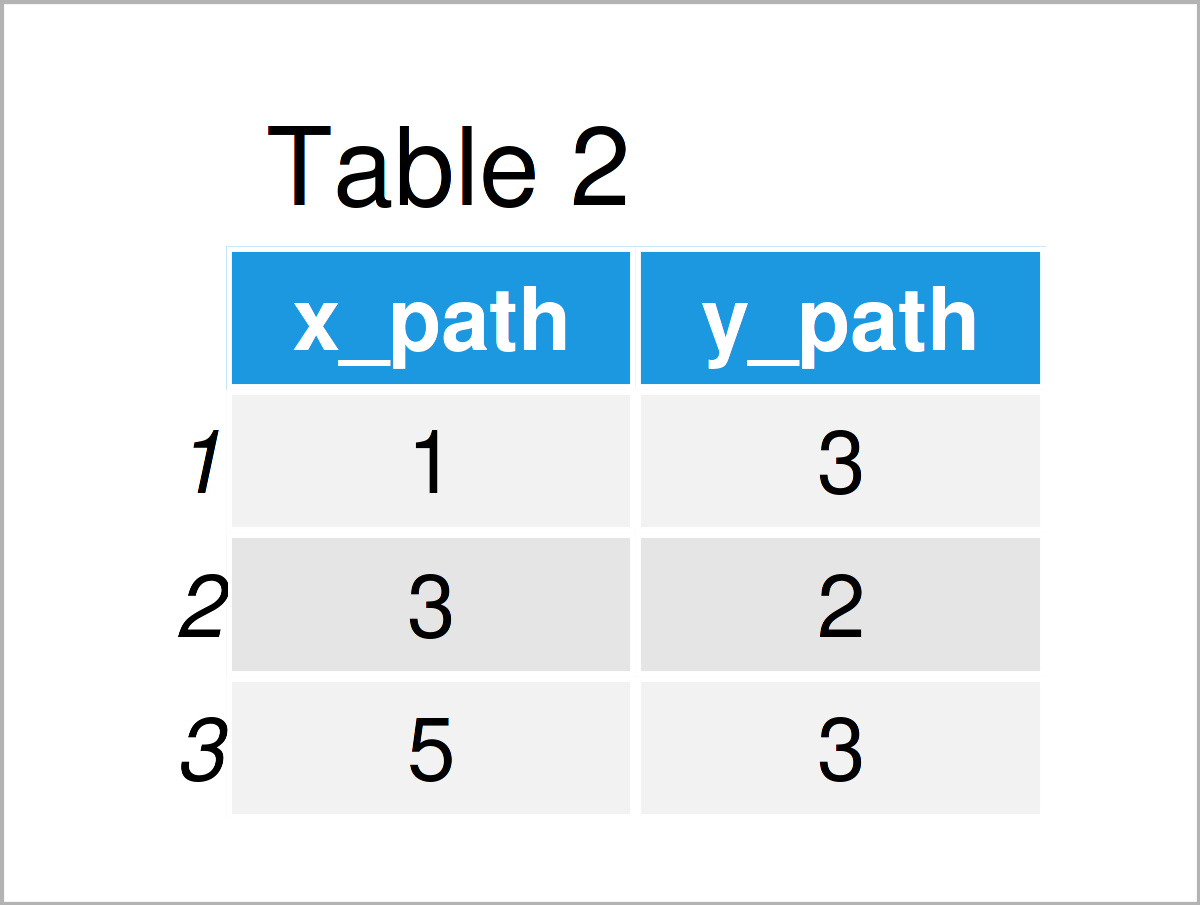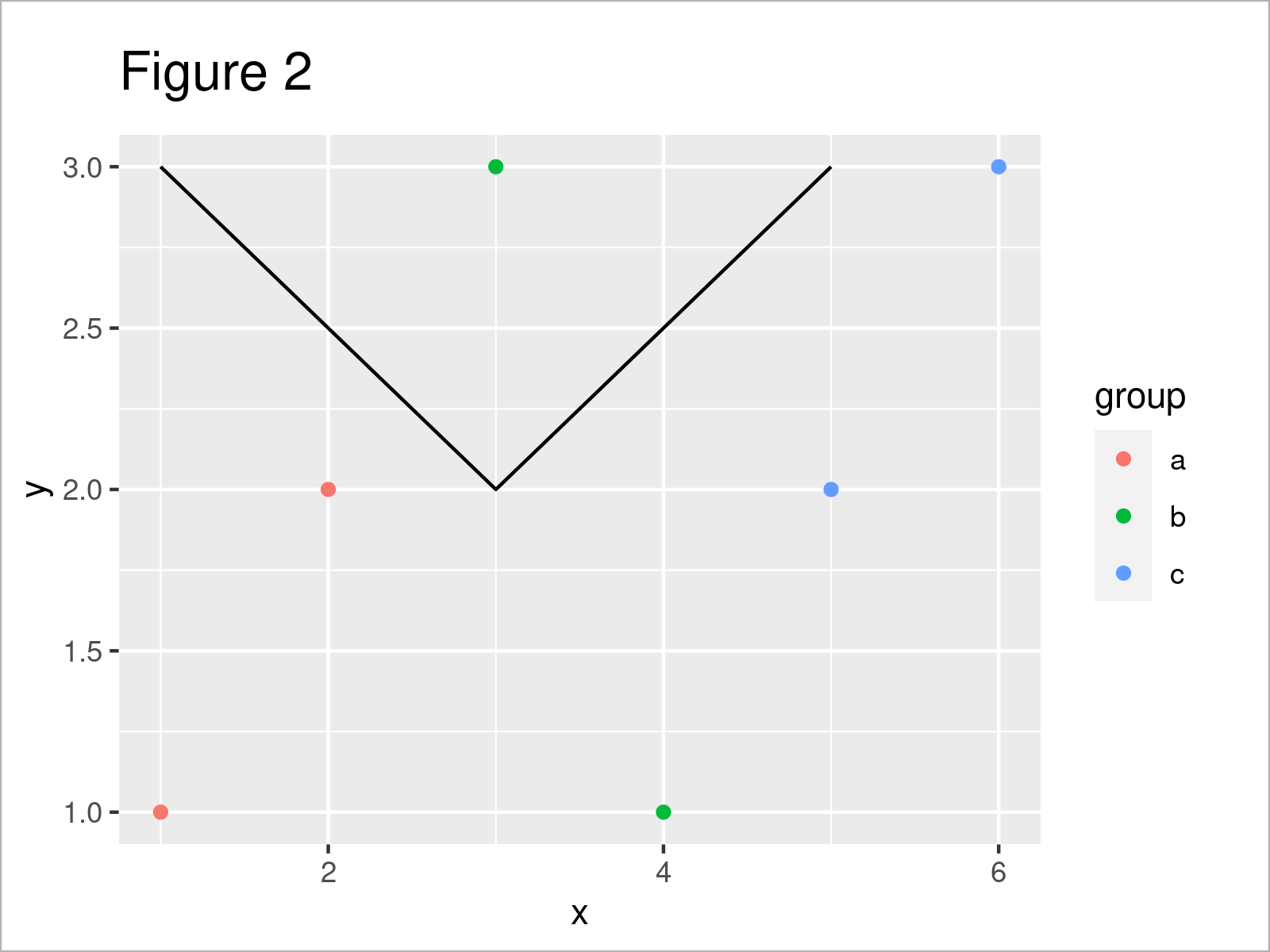R ggplot2 geom_path Error in FUN(X[[i]], …) object not found (2 Examples)
In this tutorial, I’ll explain how to reproduce and debug the “Error in FUN(X[[i]], …) : object not found” when using the geom_path function of the ggplot2 package in R programming.
The tutorial will consist of the following contents:
Here’s how to do it:
Example Data, Add-On Packages & Default Plot
The following data will be used as a basis for this R programming tutorial:
data <- data.frame(x = 1:6, # Create example data frame y = 1:3, group = rep(letters[1:3], each = 2)) data # Print example data frame

Table 1 visualizes the structure of our example data: It is composed of six rows and three columns.
We also need to install and load the ggplot2 package, to be able to use the corresponding functions.
install.packages("ggplot2") # Install & load ggplot2 package library("ggplot2")
Now, we can draw a ggplot2 plot of our data as follows:
ggp <- ggplot(data, # Create ggplot2 plot without path aes(x = x, y = y, col = group)) + geom_point() ggp # Draw ggplot2 plot without path

By executing the previous R programming syntax, we have plotted Figure 1, i.e. a ggplot2 scatterplot without a path.
Let’s specify the x- and y-axis coordinates for our path:
data_path <- data.frame(x_path = c(1, 3, 5), # Specify data for path y_path = c(3, 2, 3)) data_path # Print data for path

As shown in Table 2, the previous R code has created a new data set called data_path, which contains all the coordinates of our path.
Next, we would like to add this path on top of our plot using the geom_path function. However, this can lead to problems…
Example 1: Reproduce the Error in FUN(X[[i]], …) : object ‘group’ not found
In this example, I’ll show how to replicate the “Error in FUN(X[[i]], …) : object not found”.
Let’s assume that we want to add a path to our plot using the geom_path function. Then, we might try to do this as shown below:
ggp + # Trying to draw path geom_path(data = data_path, aes(x = x_path, y = y_path)) # Error in FUN(X[[i]], ...) : object 'group' not found
As you can see, the previous R code has returned the error message “Error in FUN(X[[i]], …) : object ‘group’ not found”. This is because the geom_path function searches for the group variable in our path data set.
Let’s solve this issue!
Example 2: Fix the Error in FUN(X[[i]], …) : object ‘group’ not found
In this example, I’ll show how to debug the “Error in FUN(X[[i]], …) : object not found”.
To accomplish this, we have to set the inherit.aes argument within the geom_path function to FALSE.
Consider the R syntax below:
ggp + # Drawing path properly geom_path(data = data_path, aes(x = x_path, y = y_path), inherit.aes = FALSE)

As shown in Figure 2, we have plotted a ggplot2 scatterplot with a path on top. No error messages are shown anymore.
Video & Further Resources
Have a look at the following video which I have published on my YouTube channel. In this tutorial, I give a detailed introduction to the ggplot2 Package and data visualization in R, structured in different sections with examples for beginners but also advanced users.
Furthermore, you may have a look at some of the other posts on this website. Please find a selection of posts below.
- Error: Object X not Found in R
- How to Fix the Error in R : object not interpretable as a factor
- ggplot2 Error in R: “`data` must be a data frame, or other object coercible by `fortify()`, not an integer vector”
- ggplot2 Error in R: Must be Data Frame not S3 Object with Class Uneval
- Dealing with Errors & Warnings in R (Overview)
- Drawing Plots in R
- R Programming Overview
In summary: This tutorial has demonstrated how to handle the “Error in FUN(X[[i]], …) : object not found” in R. In case you have additional questions, don’t hesitate to let me know in the comments. Furthermore, please subscribe to my email newsletter in order to receive regular updates on new tutorials.







2 Comments. Leave new
Thank you so much! That sh*t has really pissed me off.
Hey Trilisser,
Great to hear that the tutorial helped you out! Thanks for the feedback!
Regards,
Matthias